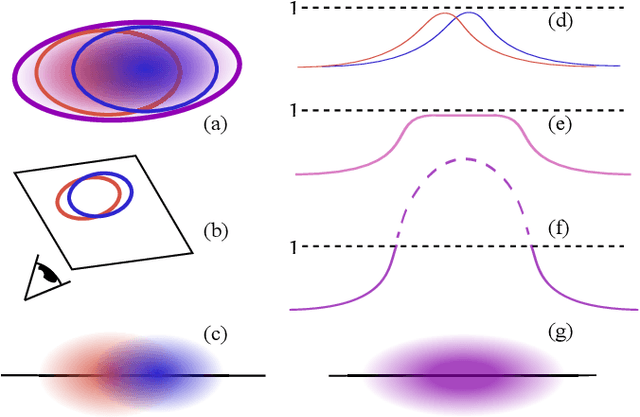Alexandre Lanvin
Reducing the Memory Footprint of 3D Gaussian Splatting
Jun 24, 2024Abstract:3D Gaussian splatting provides excellent visual quality for novel view synthesis, with fast training and real-time rendering; unfortunately, the memory requirements of this method for storing and transmission are unreasonably high. We first analyze the reasons for this, identifying three main areas where storage can be reduced: the number of 3D Gaussian primitives used to represent a scene, the number of coefficients for the spherical harmonics used to represent directional radiance, and the precision required to store Gaussian primitive attributes. We present a solution to each of these issues. First, we propose an efficient, resolution-aware primitive pruning approach, reducing the primitive count by half. Second, we introduce an adaptive adjustment method to choose the number of coefficients used to represent directional radiance for each Gaussian primitive, and finally a codebook-based quantization method, together with a half-float representation for further memory reduction. Taken together, these three components result in a 27 reduction in overall size on disk on the standard datasets we tested, along with a 1.7 speedup in rendering speed. We demonstrate our method on standard datasets and show how our solution results in significantly reduced download times when using the method on a mobile device.
* Project website: https://repo-sam.inria.fr/fungraph/reduced_3dgs/
A Hierarchical 3D Gaussian Representation for Real-Time Rendering of Very Large Datasets
Jun 17, 2024



Abstract:Novel view synthesis has seen major advances in recent years, with 3D Gaussian splatting offering an excellent level of visual quality, fast training and real-time rendering. However, the resources needed for training and rendering inevitably limit the size of the captured scenes that can be represented with good visual quality. We introduce a hierarchy of 3D Gaussians that preserves visual quality for very large scenes, while offering an efficient Level-of-Detail (LOD) solution for efficient rendering of distant content with effective level selection and smooth transitions between levels.We introduce a divide-and-conquer approach that allows us to train very large scenes in independent chunks. We consolidate the chunks into a hierarchy that can be optimized to further improve visual quality of Gaussians merged into intermediate nodes. Very large captures typically have sparse coverage of the scene, presenting many challenges to the original 3D Gaussian splatting training method; we adapt and regularize training to account for these issues. We present a complete solution, that enables real-time rendering of very large scenes and can adapt to available resources thanks to our LOD method. We show results for captured scenes with up to tens of thousands of images with a simple and affordable rig, covering trajectories of up to several kilometers and lasting up to one hour. Project Page: https://repo-sam.inria.fr/fungraph/hierarchical-3d-gaussians/
* Project Page: https://repo-sam.inria.fr/fungraph/hierarchical-3d-gaussians/
 Add to Chrome
Add to Chrome Add to Firefox
Add to Firefox Add to Edge
Add to Edge